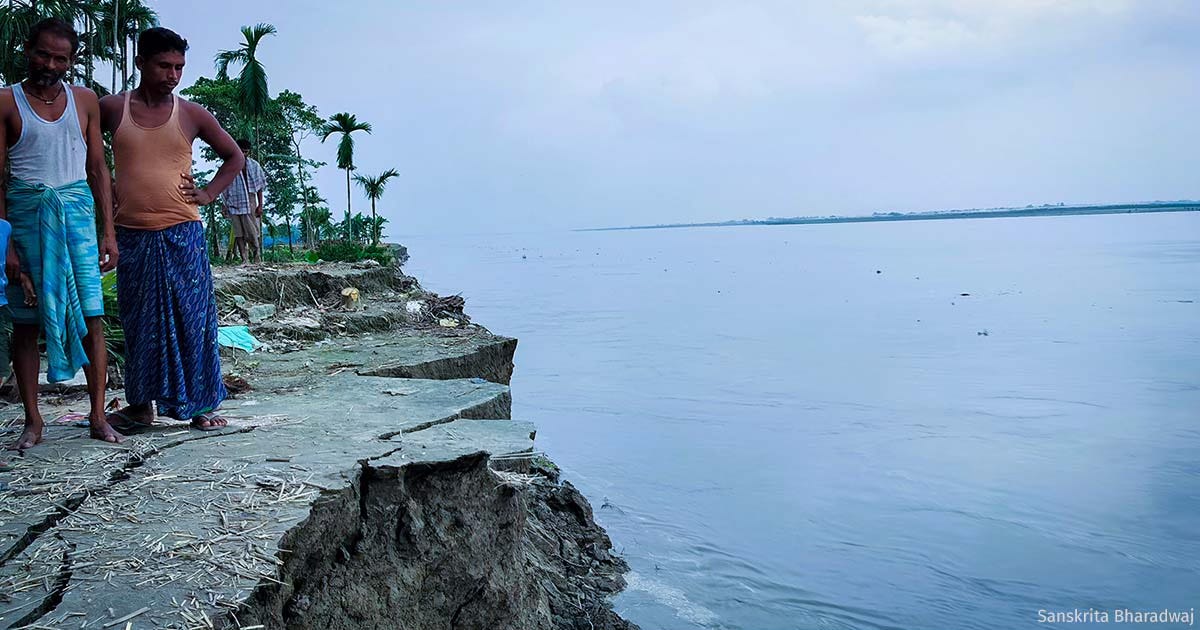India Must Fast-Track Renewable Energy Growth
Also this week, why the extent of damage from riverbank erosion is unclear, how habitat rights could help Odisha's tribal groups, and how pollution is showing up in Delhi hospitals
THE 29th edition of the Conference of Parties (COP29) begins on November 11 in Baku, Azerbaijan—and all indications are that it could be contentious for sure, and if the concrete decisions follow from the discussions, then also groundbreaking.
Tanvi Deshpande has been covering the last several editions of COP for IndiaSpend. In an earlier piece in the run-up to COP29, Tanvi reported on why a new climate change finance goal has become the bone of contention between developed and developing nations.
In her latest piece, this week, Tanvi looks at another aspect of the issue, from an India lens. Briefly, while India recently hit the targeted 200 Gigawatt mark in its non-fossil fuel installed capacity, it is way behind targets when it comes to wind and solar power generation.
In solar, India targets 319 GW by 2030 but as of October 2024, its installed capacity is just 90.76 GW. Similarly with wind power, the target for 2030 is 110 GW, but installed capacity as of October 2024 is just 47.36 GW. And finance—in other words, who will pay for this—is just one of the issues hampering India’s push for non-fossil fuel energy. And while the financial dickering continues, time is running out, both for India and the world. Read:
India’s Need to Step Up Solar, Wind Capacity Addition by Tanvi Deshpande
THE char is a phenomenon peculiar to the Ganges-Brahmaputra deltaic region. The two rivers are among the world’s siltiest, alongside the Yellow River in China and the Amazon in South America. It is estimated that the Brahmaputra alone carries around 540 million tonnes of silt per year—all of it due to the rapid erosion of the geologically active Himalayan mountain range.
In summer, this high volume of sediment accretes and begins to build islands—known as chars—in mid-river. These fertile silt islands, many of them located in Assam—can be huge: Majauli Char in Assam, billed as the world’s biggest river island, covers an area of 350 square kilometres.
People who have been rendered homeless by floods—an annual feature in Assam—set up temporary settlements on these chars, attracted by the extremely high fertility of the fresh silt. However, denizens of the chars are confronted with an existential problem—when the monsoons come and the river is in spate, the silt erodes and the river swallows up agricultural plots, homes, and everything else in its path.
Environmentalists point to this as a major issue affecting hundreds of thousands of lives and livelihoods, and that requires a comprehensive mitigation strategy. But in order to devise an overarching strategy, the pre-requisite is comprehensive data, which is sadly lacking. Read:
Why Real Impact Of Assam’s Riverbank Erosion Is Unclear by Sanskrita Bharadwaj
HABITAT rights—which, simply put, refers to the question of who has rights over forest land—is a thorny issue, made worse by the fact that solutions are piecemeal.
The law is clear enough. Habitat rights provide legal sanction to tribal communities in particular geographies that secure their ancestral rights to live off forest produce, and also secures cultural practices and livelihoods. The problem, thus, is not with the law but with its sporadic application.
In good news-bad news, various tribes largely based in and around the Mayurbhanj district of Odisha were granted habitat rights in September 2024. That is the good news—the bad news is, information is scanty with the result that most members of this pre-agricultural community have no idea that they are now legally entitled to live off the forests that have been their ancestral home, and to reclaim their heritage.
It is not just about a few hundred primitive tribals being given access to the forests that have historically been their home—the larger point is that tribals are acutely sensitive to the needs of their ecology, and are the best guardians for our forests. Why is all this important, and why should we care? Read:
Habitat Rights Promise to Secure Ecology, Tribal Heritage in Odisha by Tazeen Qureshy
ELSEWHERE, in our Hindi section, we have stories on how air pollution has begun showing up in Delhi hospitals, with serious consequences, and a video story on extreme overcrowding in trains as hundreds of thousands travel home for the Chathh Puja.
Till next week, stay safe.





